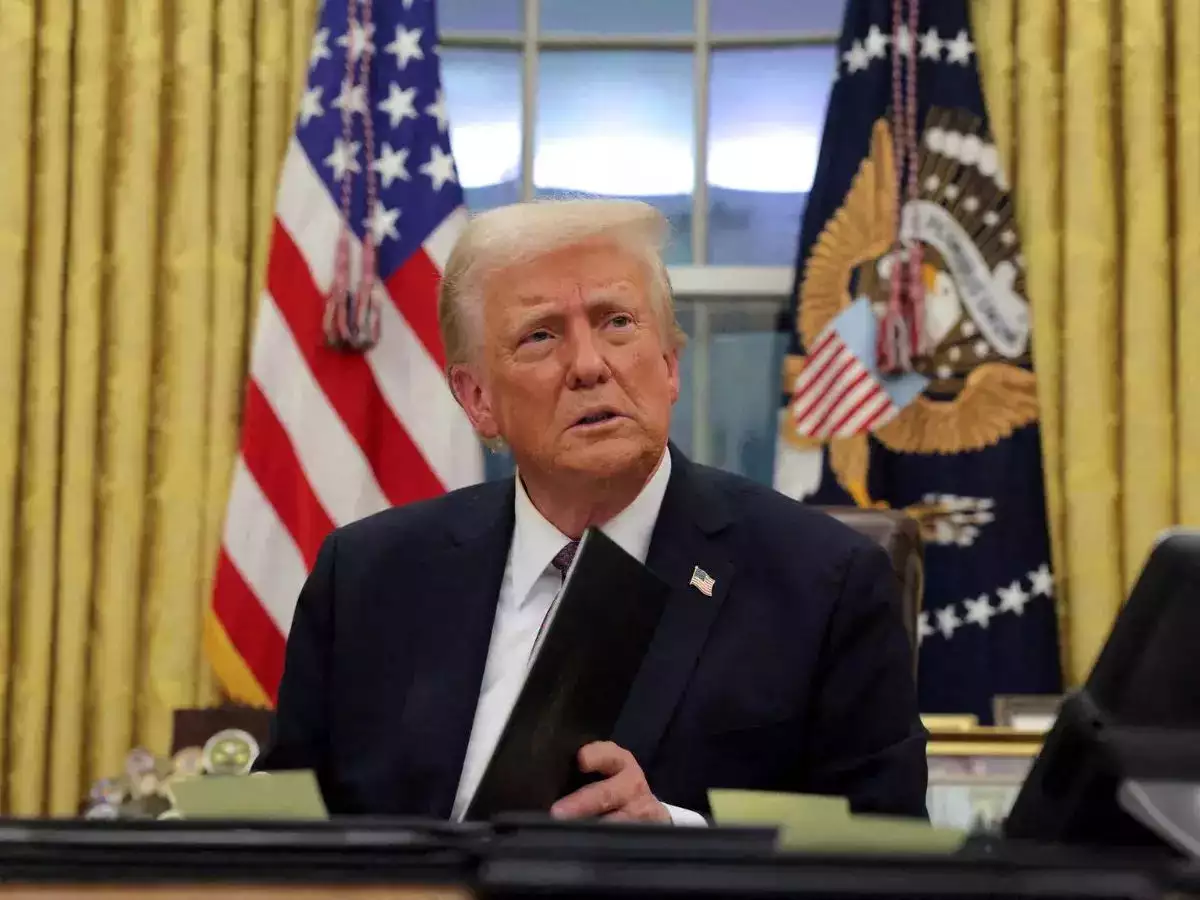Trump’s Tariff Strategy: A Measured Approach

In recent weeks, U.S. President Donald Trump has made headlines with his tariff announcements. His approach during this second term appears to be more gradual compared to the aggressive rhetoric he employed during his campaign. A report by the Union Bank of India highlights this shift, noting that financial markets have responded with caution. While Trump has threatened tariffs on goods from several countries, including China, Mexico, Canada, and the Eurozone, the actual proposals are less severe than many anticipated. This article delves into the implications of Trump’s tariff strategy, the market’s reaction, and the upcoming Federal Reserve meeting.
A Shift in Tariff Strategy
President Trump’s initial tariff proposals have raised eyebrows, particularly given the stark contrast to his earlier campaign promises. During his campaign, Trump suggested imposing a staggering 60 percent tariff on Chinese goods. However, his recent proposal of a 10 percent tariff marks a significant reduction. This shift indicates a more measured approach, which has led to a more subdued reaction from financial markets.
The proposed tariffs on goods from Mexico and Canada are set at 25 percent, with potential implementation starting as early as February 1. Additionally, Trump has mentioned tariffs on Eurozone goods, which currently enjoy a trade surplus with the U.S. He also proposed a 2.5 percent tariff on global goods. While these measures could have substantial impacts, they are perceived as moderate compared to earlier expectations. This moderation has eased some market concerns, allowing for a more stable economic environment.
Market Reactions and the Dollar Index
The financial markets have reacted cautiously to Trump’s tariff announcements. Since January 20, 2025, the Dollar Index (DXY) has corrected by approximately 1 percent. This decline reflects the market’s perception that Trump’s initial tariff announcements are less severe than anticipated. Investors are adjusting their strategies based on this new information, leading to a more stable outlook for the U.S. dollar.
The dollar’s strength is further supported by the economic performance of the U.S. compared to other regions. Slower growth in Asia and Europe creates headwinds for other major currencies, reinforcing the dollar’s dominance. As markets await final decisions on Trump’s tariff policies, the focus remains on how these measures will shape the global economic landscape.
Anticipation of the Federal Reserve Meeting
All eyes are now on the upcoming Federal Open Market Committee (FOMC) meeting scheduled for January 29. Investors are keenly awaiting comments from Federal Reserve Chair Jerome Powell. The market largely expects the Fed to maintain interest rates at their current levels. However, Trump’s recent statements demanding lower interest rates globally add an element of uncertainty.
Trump has emphasized the need for interest rates to drop, stating, “I’ll demand that interest rates drop and likewise, they should be dropping all over the world.” Powell’s remarks during the FOMC meeting could provide crucial insights into the Fed’s stance amid growing political pressure. Investors are particularly interested in how the Fed will navigate these demands while maintaining its independence.
Observer Voice is the one stop site for National, International news, Sports, Editor’s Choice, Art/culture contents, Quotes and much more. We also cover historical contents. Historical contents includes World History, Indian History, and what happened today. The website also covers Entertainment across the India and World.

